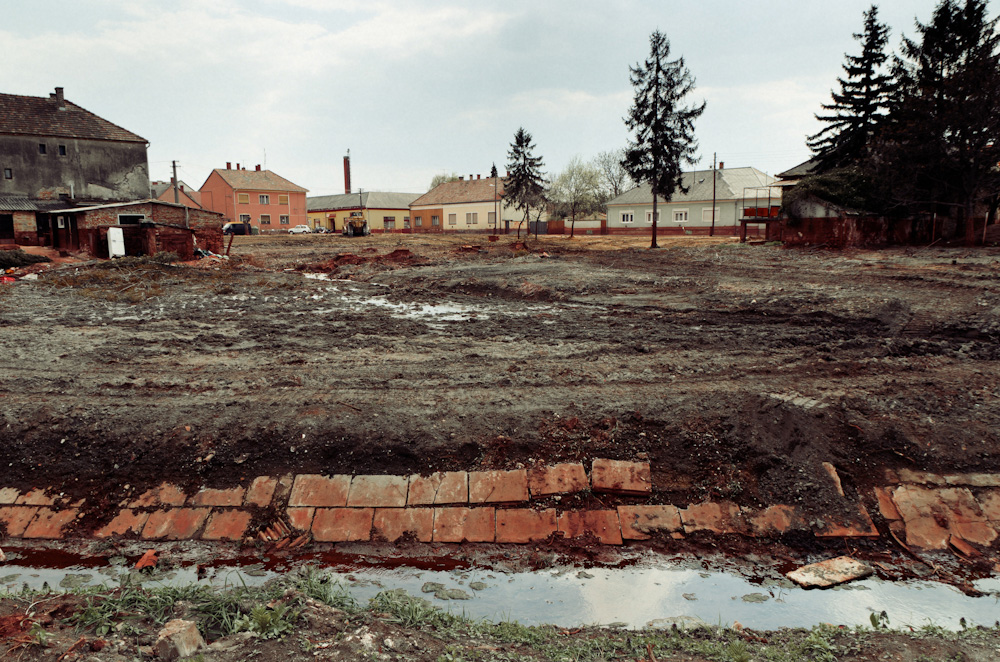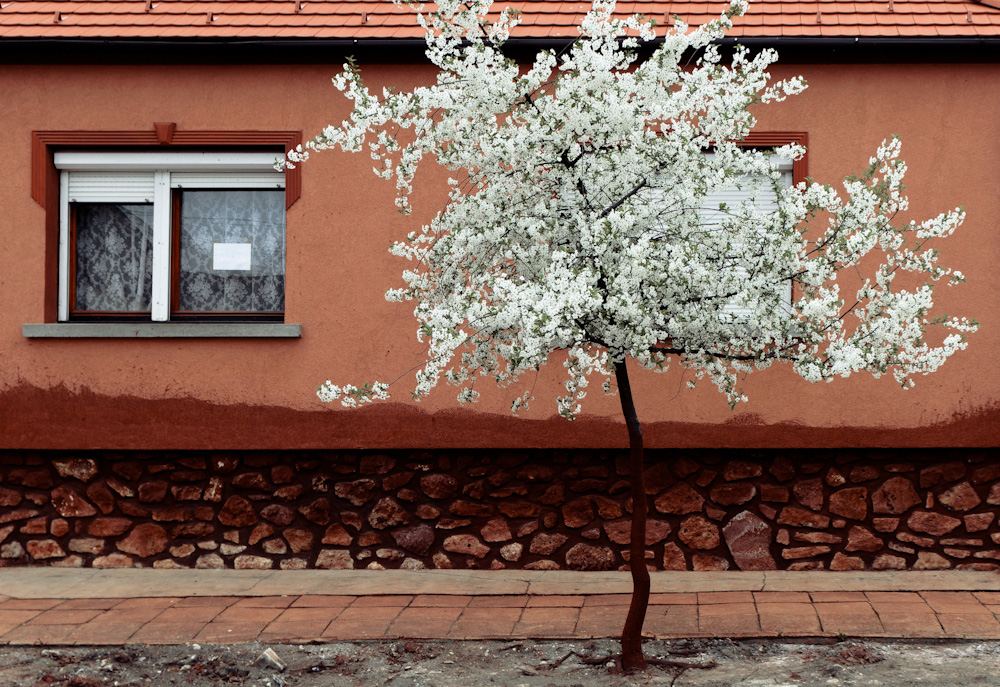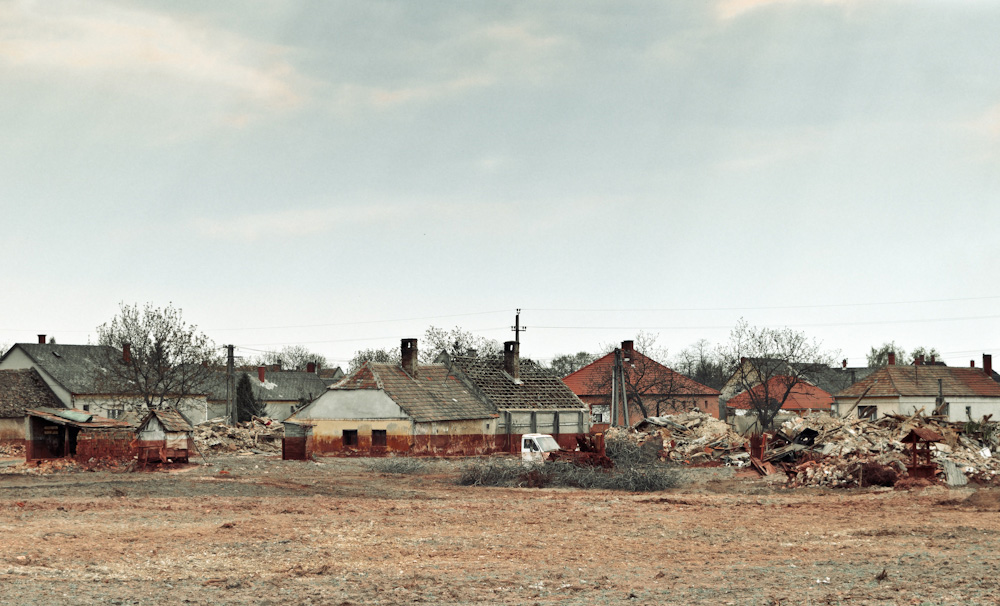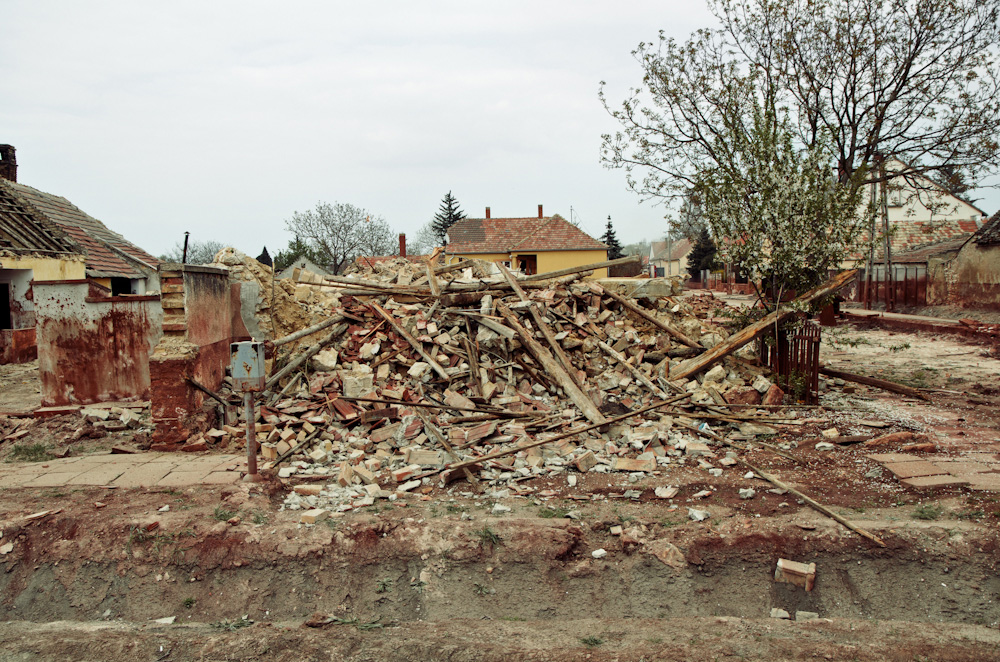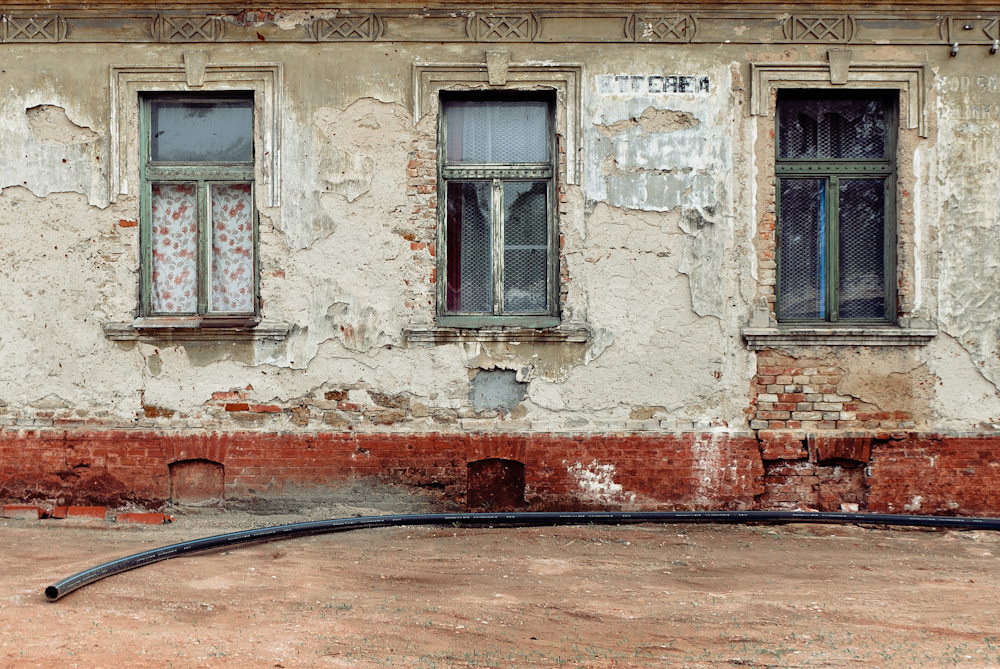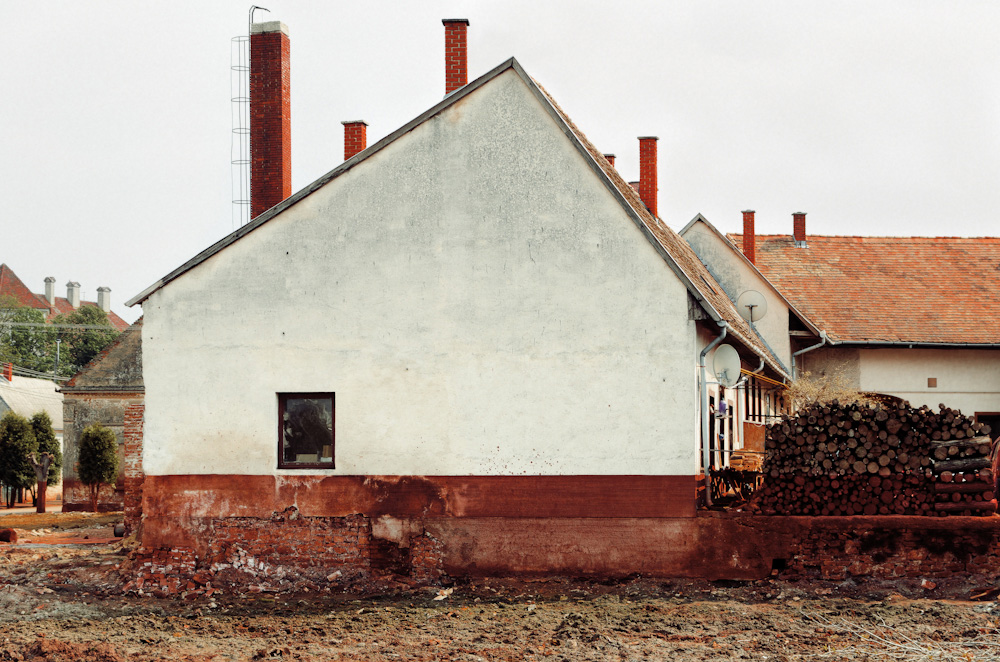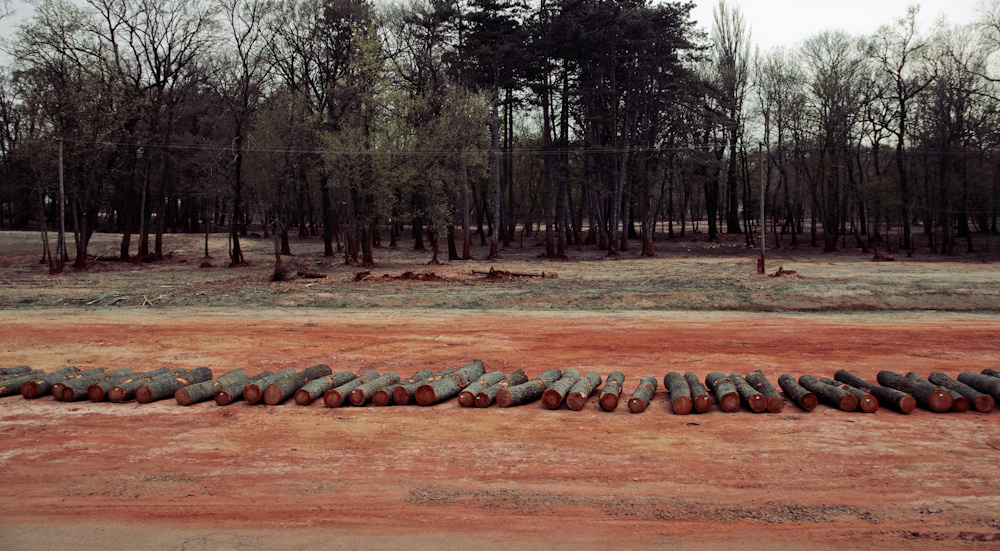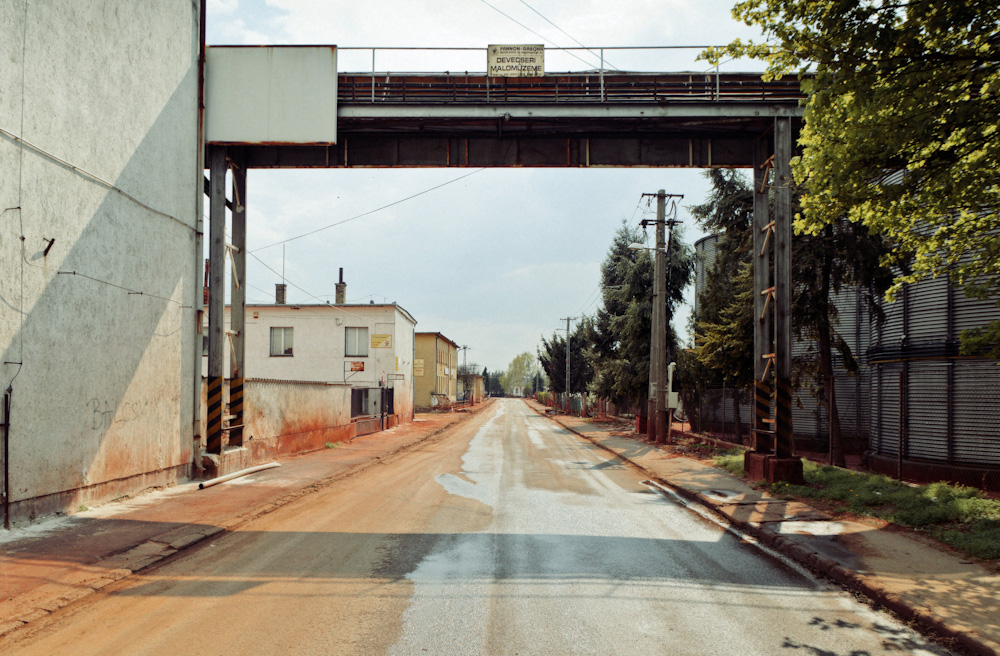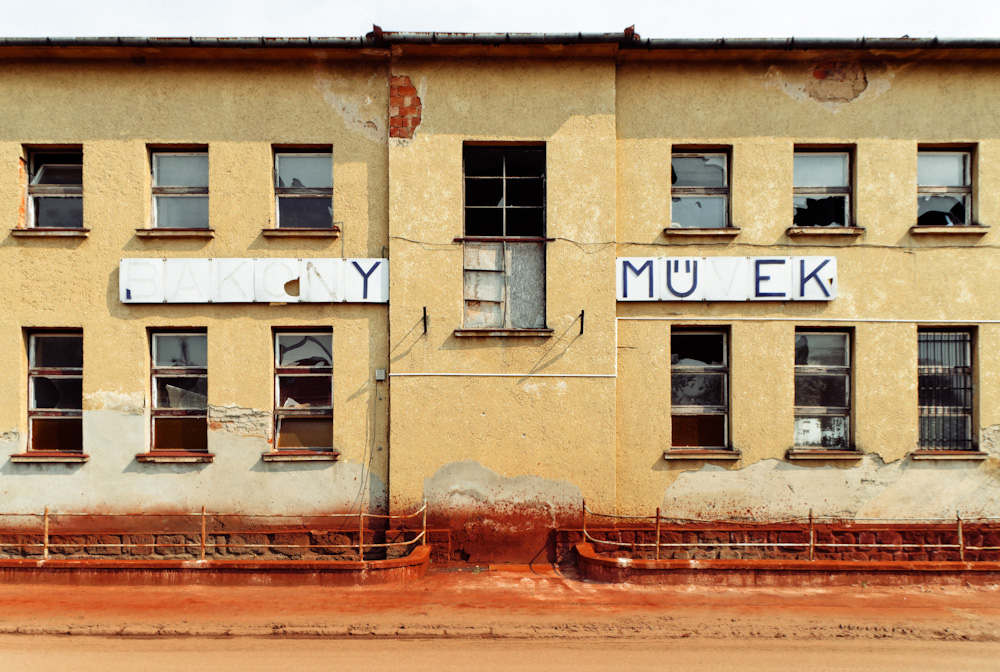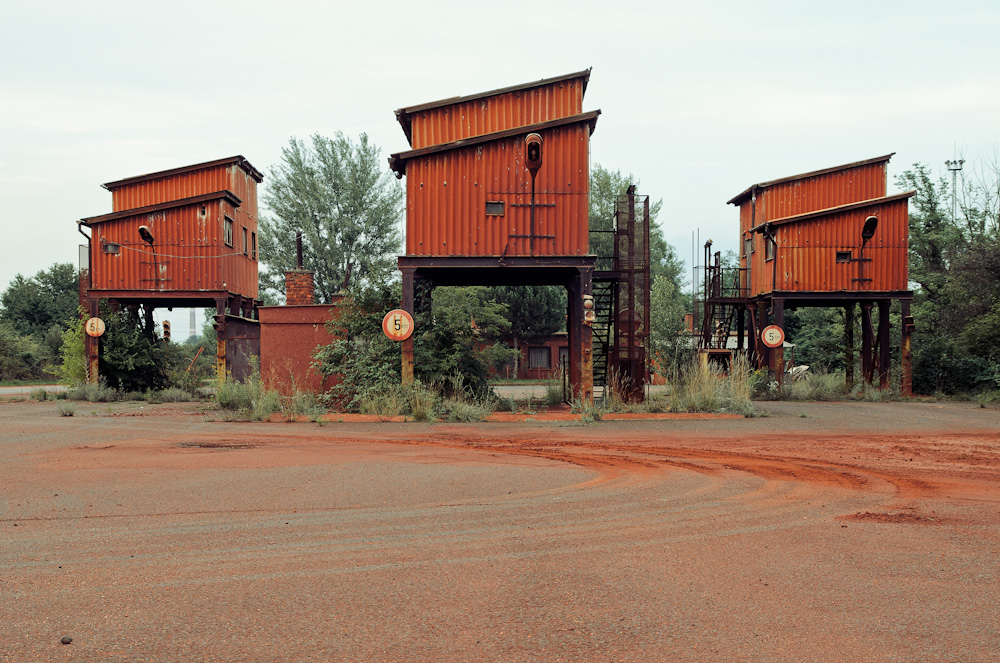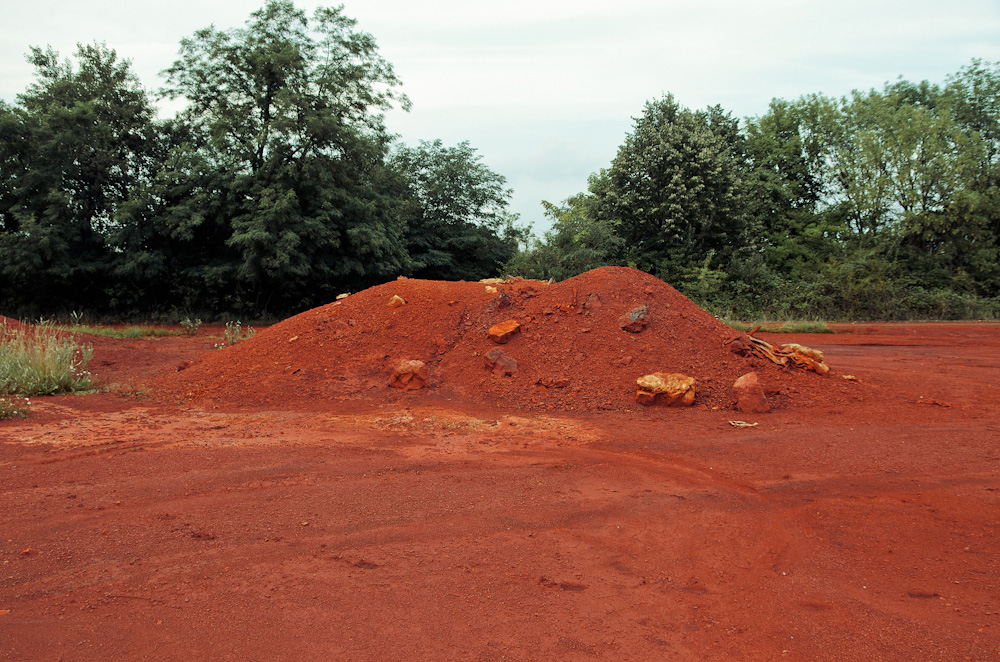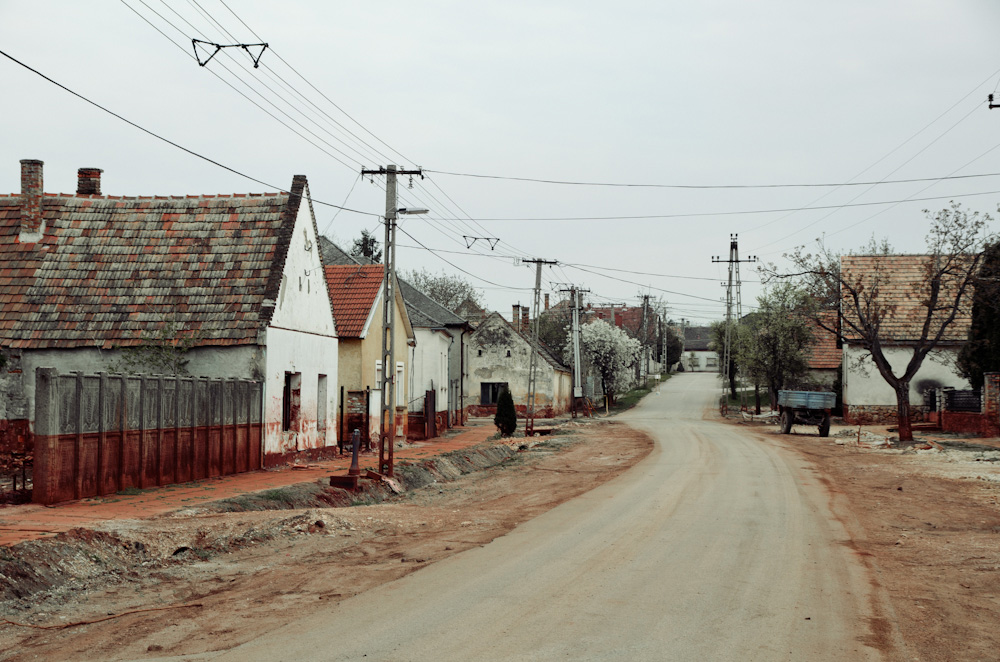Juror's Choice: Pablo Martínez
Artist Statement: The Line
The Line
14th of October, 2010 at 12.25pm around a million cubic metres of toxic waste were released after the burst of the retaining wall of one of the reservoirs used for the accumulation of MAL aluminium company rubbish in the town named Ajka, Veszprém county, Hungary. The spilling reached two meters high and started a destructive race trying to release its energy, flooding Devecser and Kolontár villages. Nine human casualties were counted and the material damages were uncountable, including the destruction or irreparable deterioration of a big ammount of houses, the dissapearing of infrastructures and the poisoning of dozens of fields. The accident was fastly considered the biggest catastrophe of hungarian history.
Ajka, with a population of around 30.000 inhabitants, falls around 150 kilometres away from Budapest, being one of those cities established during the comunist period as a satelite for huge industrial developments. The existence of bauxite and coal deposits made Ajka an obvious candidate for the industrialization plans of the country, which had been, during austrian-hungarian development, the granary of the empire. Cities like Ajka, sometimes, were used as the practice laboratory of socialism ideas, with concrete housing blocks and interstitial garden spaces to give accommodation to the inmigration moved to work on the massive factories, on which right production was laying the hope of the city. They were quite vulnerable urban ecosystems, with a high rate of dependence towards this factory developments. After comunism fall, and once exhasuted the old production system closely related with soviet needs, the national aluminium company was faced to an uncertain future. Without the proteccionism of this previous model, the old factories, with their outdated machinery, were seen as a huge weight to carry on for the correct economic transition of the country and as it happened to most of the country public companies, they were the subject of an accelerated privatization with a quite questionable transaction value.
Reaching nowadays, we find a factory with oldfashion technology wich renovation seems not profitable but which operation is still a basic need for the future of all the county. Ruin or risk. Difficult dilemma for an impoverished nation, disappointed with the discovery that the capital economy is not completely the promised miracle.


